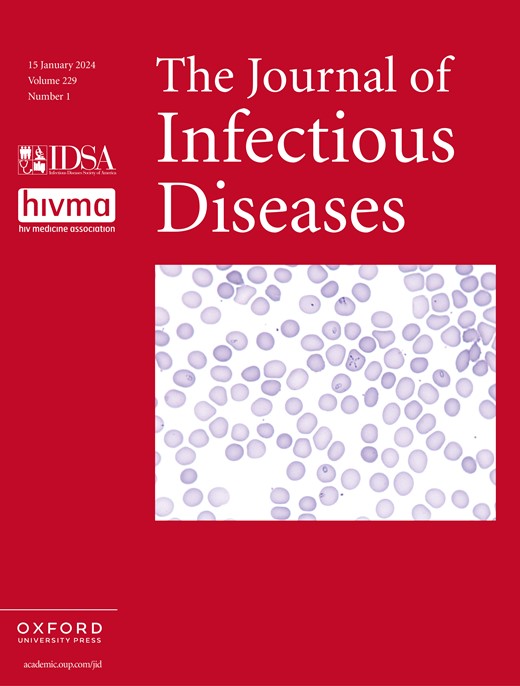Reduced Likelihood of Hospitalization with the JN.1 or HV.1 SARS-CoV-2 Variants Compared to the EG.5 Variant.
IF 5
2区 医学
Q2 IMMUNOLOGY
引用次数: 0
Abstract
Within a multi-state viral genomic surveillance program, we evaluated whether proportions of SARS-CoV-2 infections attributed to the JN.1 variant and to XBB-lineage variants (including HV.1 and EG.5) differed between inpatient and outpatient care settings during periods of cocirculation. Both JN.1 and HV.1 were less likely than EG.5 to account for infections among inpatients versus outpatients (aOR=0.60 [95% CI: 0.43-0.84; p=0.003] and aOR=0.35 [95% CI: 0.21-0.58; p<0.001], respectively). JN.1 and HV.1 variants may be associated with a lower risk of severe illness. The severity of COVID-19 may have attenuated as predominant circulating SARS-CoV-2 lineages shifted from EG.5 to HV.1 to JN.1.
与 EG.5 变异体相比,JN.1 或 HV.1 SARS-CoV-2 变异体的住院概率降低。
在一项多州病毒基因组监测计划中,我们评估了在共同流行期间,住院病人和门诊病人中因 JN.1 变体和 XBB 系变体(包括 HV.1 和 EG.5)感染 SARS-CoV-2 的比例是否存在差异。在住院病人与门诊病人之间,JN.1 和 HV.1 感染的可能性均低于 EG.5 (aOR=0.60 [95% CI: 0.43-0.84; p=0.003]和 aOR=0.35 [95% CI: 0.21-0.58; p=0.003])。
本文章由计算机程序翻译,如有差异,请以英文原文为准。
求助全文
约1分钟内获得全文
求助全文
来源期刊

Journal of Infectious Diseases
医学-传染病学
CiteScore
13.50
自引率
3.10%
发文量
449
审稿时长
2-4 weeks
期刊介绍:
Published continuously since 1904, The Journal of Infectious Diseases (JID) is the premier global journal for original research on infectious diseases. The editors welcome Major Articles and Brief Reports describing research results on microbiology, immunology, epidemiology, and related disciplines, on the pathogenesis, diagnosis, and treatment of infectious diseases; on the microbes that cause them; and on disorders of host immune responses. JID is an official publication of the Infectious Diseases Society of America.
 求助内容:
求助内容: 应助结果提醒方式:
应助结果提醒方式:


